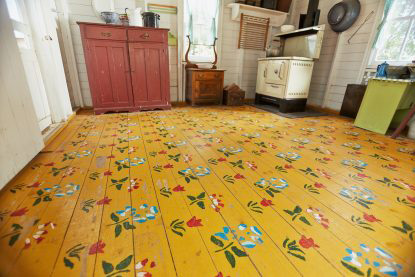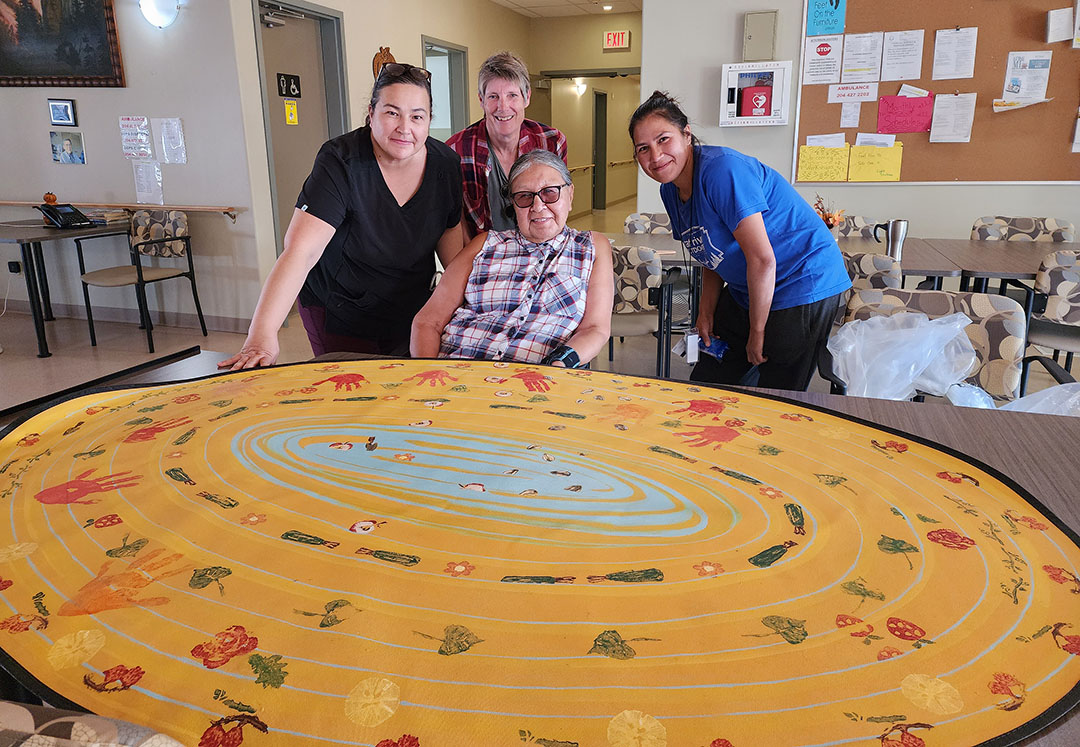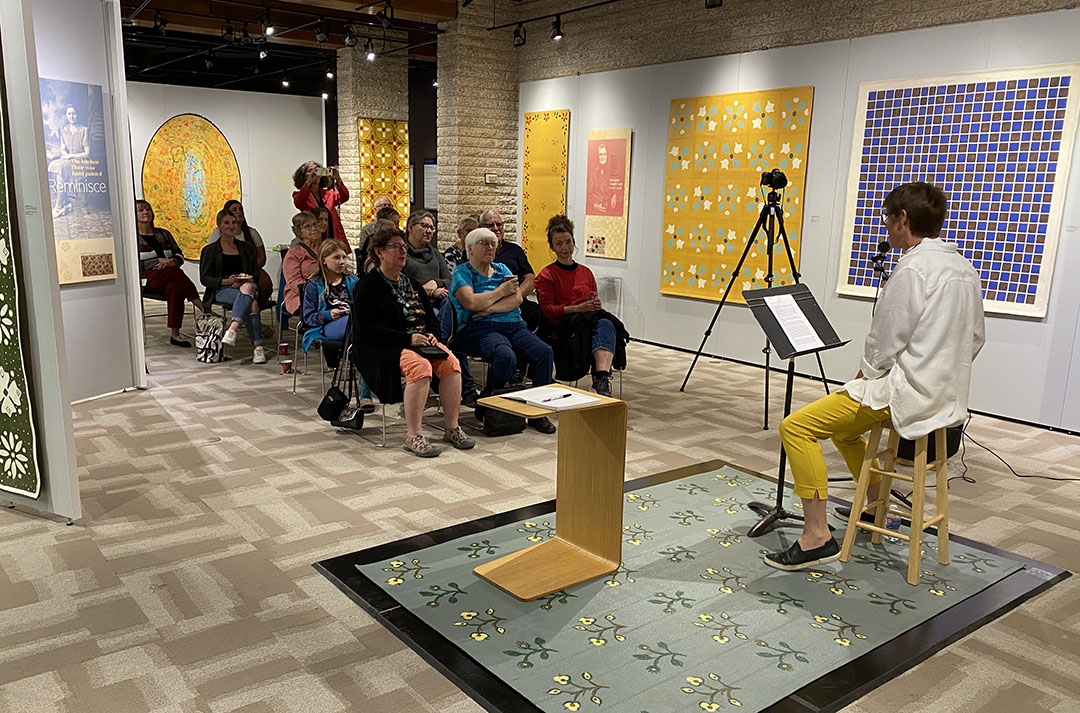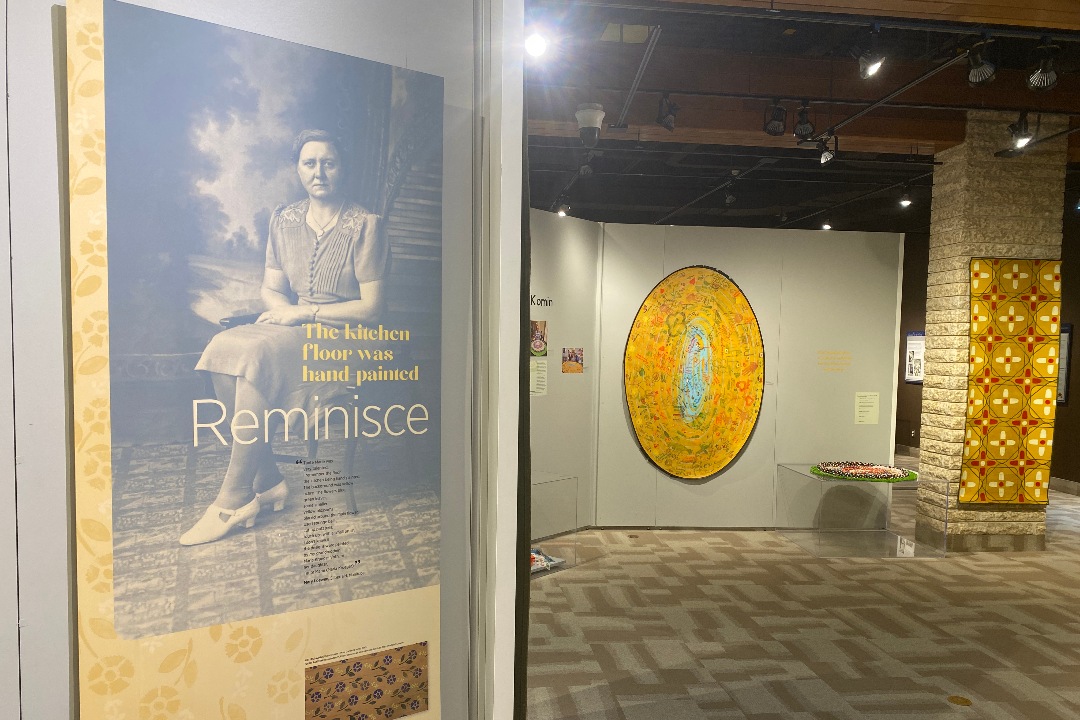Krahn spent the last two decades in the restoration, presentation, and documentation of 19th and 20th-century old housebarns, as well as the material culture in Neubergthal, Manitoba – a Mennonite Street Village and National Historic Site. Through this exhibition, she pays a tribute to her female forebearers who built, designed, and decorated the floors of their homes within a challenging, male-led religious ideology, and financial constraints.
The study of hand-painted floors in these buildings, crafted by generations of Mennonite women, shaped Krahn’s artistic journey. Today, her research, documentation, and restoration of wooden floors with painted patterns have inspired her to re-imagine them in floor cloths – opening her eyes to the Mennonite life around the turn of the 20th century.

“Saskatchewan has a strong Mennonite community and Margruite’s recreation of these patterns on floor cloths offers our visitors an exceptional opportunity to discover and appreciate this artist without the need of travelling too far,” said Helanna Gessner, DCC’s curatorial, collections, and exhibits manager.
The latest addition to this exhibit highlights the historical relationship between Mennonite women in Neubergthal and the women of Roseau River Anishinaabe First Nation during the 19th and 20th centuries when Ojibway women would make rugs and baskets to sell or barter to nearby communities. In the 21st century, Krahn brings together Mennonite, non-Mennonite, and Ojibway women and girls who created a hand printed floor cloth called Dankboa (Plaudietsch for grateful) to be on display alongside braided rugs to tell the story of these women.

The DCC officially launched the exhibit on Wednesday, Sept. 27, featuring an artist talk and Q&A session as part of Culture Days. The exhibit will be on display until January 27, 2024, offering guided tours and educational programming available for booking.

Together we will create inspired places for people to address the challenges of the future. We invite you to join by supporting visionary spaces at USask.
